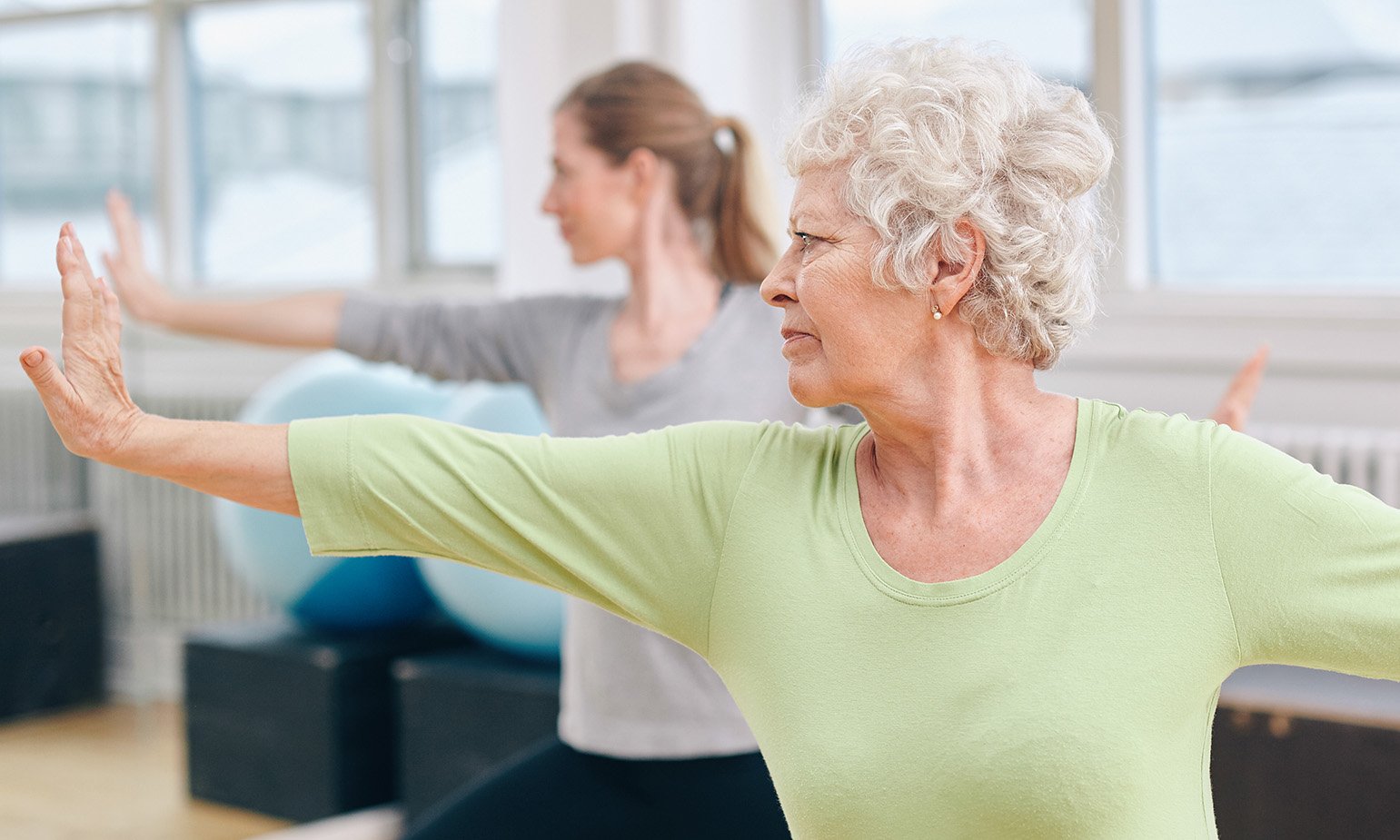
It can be easy to become less and less physically active as you age. However, it’s been proven that staying active as an older adult is one of the best things you can do for yourself as you get older. Here are five reasons to have an exercise plan when you’re a senior.
1. Disease and Injury Prevention
Exercising can help reduce the risk of certain diseases and injuries. The Centers for Disease Control and Prevention (CDC) reports that physical activity can reduce your health risk for cardiovascular disease, type 2 diabetes, some cancers, and more.[1]
Additionally, exercising can help protect your muscles, joints, and bones. Doing so can help lower your risk of falling and other common injuries that can come with aging. Reducing the risk of disease and injury can also help keep your medical bills to a minimum by not having to visit the doctor as frequently.
2. Improved Mental Health
Staying active can help your physical health, but it can also improve your mental well-being. A healthy mental state is essential as you age because many aging adults suffer from conditions including anxiety, depression, and cognitive decline. [2]
However, consistent physical activity can be a great way to combat these mental hurdles. It has been reported that regular exercise can improve cognitive function. [3]
3. Better Sleep
Making sure you get enough quality sleep is also important for your health. One way to improve your quality of sleep is to exercise. There are reports that physical activity can help you have a more restful night of sleep. [4]
More specifically, aerobic exercise may reap the most sleep benefits. Aerobic exercise, also known as cardio, is anything that “uses continuous, rhythmic movement of large muscle groups to strengthen the heart and lungs (cardiovascular system).” [5] This can include walking, jogging, swimming, cycling, and more.
4. Increased Flexibility
You don’t want to overlook the importance of flexibility in your exercise routine. As you age, you may experience changes in your muscle, bone, and joints.[6] However, adding stretching to your exercise routine can keep your body more fluid and less stiff.
Doing so can help prevent injuries and reduce the risk of falling, which is common for older adults. Improved flexibility can also help you complete your daily tasks such as cleaning, cooking, and driving. Functions like these often require bending, lifting, and turning, so your body must be flexible enough to keep up with these activities.
5. Consistent Socialization
It may be easy for you to become more isolated as you age. If you do, your mental health may suffer. The CDC reports that “social isolation was associated with about a 50% increased risk of dementia.” [7] Some have also reported that loneliness can lead to physical issues, including heart disease, strokes, obesity, and more.
However, exercise can be a great way to socialize with others while staying fit. For example, you can enroll in different fitness classes. Doing so can help you meet new people who may be working towards the same goals as you. You may also consider joining a hiking or dancing group as well. There are a lot of possibilities, so have fun and choose something you’ll enjoy.
Final Thoughts
Creating an exercise plan can be an excellent tool for healthy living as you age. Following through with your exercise plan can have many benefits, including disease prevention, improved mental health, and more. Overall, taking care of your physical well-being can help you stay independent as an older adult and live a healthy life.
[1] https://www.cdc.gov/physicalactivity/basics/pa-health/index.htm
[2] https://www.mhanational.org/anxiety-older-adults
[3] https://www.ncbi.nlm.nih.gov/pmc/articles/PMC4587595/
[4] https://www.hopkinsmedicine.org/health/wellness-and-prevention/exercising-for-better-sleep
[5] https://orthoinfo.aaos.org/en/staying-healthy/aerobic-exercise/
[6] https://www.betterhealth.vic.gov.au/health/conditionsandtreatments/ageing-muscles-bones-and-joints
[7] https://www.cdc.gov/aging/publications/features/lonely-older-adults.html




